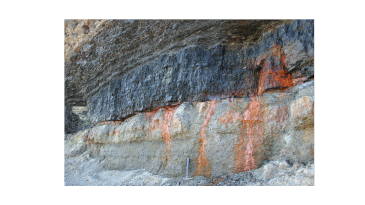- Series:Creation, God’s Design, Transcript English
Genesis 7:23
“And every living substance was destroyed which was upon the face of the ground, both man, and cattle, and the creeping things, and the fowl of the heaven; and they were destroyed from the earth: and Noah only remained alive, and they that were with him in the ark.”
 We are used to referring to coal as a fossil fuel. But what does this mean in practice? By such a classification, we are stating that coal has formed from organic material – usually considered to be plant material. Evolutionary geologists maintain that the formation of coal has required millions of years.
We are used to referring to coal as a fossil fuel. But what does this mean in practice? By such a classification, we are stating that coal has formed from organic material – usually considered to be plant material. Evolutionary geologists maintain that the formation of coal has required millions of years.
Creationist geologist Dr. Andrew Snelling has listed a number of laboratory experiments in which coal-like materials can be produced. Pressure and temperature appear to be important variables in the production of coal, as well as the presence of clay, which appears to act as a catalyst. However, there is not a straightforward relationship of these variables with yield of coal. Too much pressure seems, in certain cases, to inhibit rather than enhance the production of coal. High temperature in the absence of oxygen would appear necessary, but high temperature changes certain clay-borne minerals, and these changed minerals, requiring over 200°C, are not normally found.
In one experiment, peat-like materials were heated with clay in the absence of oxygen for eight months at 150°C. Anthracite-like materials were formed. Other experiments have used rapidly changing pressures to produce coalified wood.
Such violent, hot, and high-pressure conditions are consistent with what we might expect from the processes associated with a worldwide Flood. Millions of years were not required for coalification. On the contrary, newly formed sediment, together with the heat caused by volcanic activity, could easily be the explanation for rapid formation of coal during the months of the Flood.
Prayer: Thank You, Father, that when we examine the scientific data correctly, it is consistent with Your wonderful word. Amen.
Author: Paul F. Taylor
Ref: Snelling, A.A. (2009), Earth’s Catastrophic Past, (Green Forest, AR: Master Books), pp. 584-586. Image: Coastal exposure of the Point Aconi Seam in Nova Scotia, CC BY-SA 3.0 Unported.
© 2021 Creation Moments. All rights reserved.
